In Greek society food accompanies many activities and situations. Greek tradition recommends specific foods at holidays, weddings, baptisms, funerals or specific social events. Special traditional recipes are an integral part of the festive ritual in many areas of Greece. Women of the Greek province and all members of small local communities carry these recipes from generation to generation.
 Specific dishes fill the festive table of Christmas, New Year's and Easter although in recent years foreign dishes tend to displace the traditional festive cuisine mainly in large urban centres. Orthodox Christians fast on several days of the year. This means that during specific periods of time (before major religious holidays - Christmas, Easter and August 15) certain foods like meat, cheese, eggs or oil are excluded. The fasts recommended by the Orthodox Church are a good eating habit that promotes good health and allows the use of local agricultural products. A number of traditional recipes show us that development can be achieved via protein from vegetable sources, just as well as via protein from animal sources, provided that various sources of protein are used such as legumes, cereals, bread, rice etc.
Specific dishes fill the festive table of Christmas, New Year's and Easter although in recent years foreign dishes tend to displace the traditional festive cuisine mainly in large urban centres. Orthodox Christians fast on several days of the year. This means that during specific periods of time (before major religious holidays - Christmas, Easter and August 15) certain foods like meat, cheese, eggs or oil are excluded. The fasts recommended by the Orthodox Church are a good eating habit that promotes good health and allows the use of local agricultural products. A number of traditional recipes show us that development can be achieved via protein from vegetable sources, just as well as via protein from animal sources, provided that various sources of protein are used such as legumes, cereals, bread, rice etc.
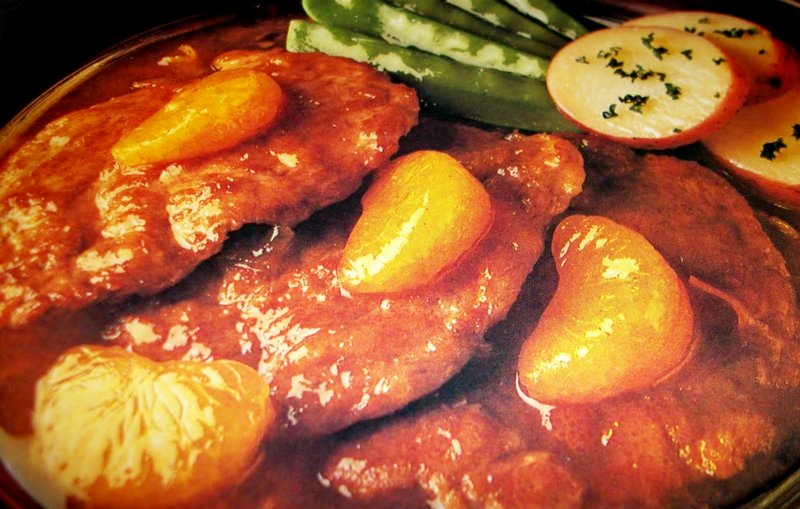 In Greece the main Christmas meal is pork. It holds a prominent place in the Greek Christmas table since meat was a "luxury item" which was only consumed on special occasions. The animals of the family were bred mainly for dairy products and eggs. Eating meat, even cured, was a rare luxury for most of the population. Instead, wealthy people often enjoyed the meat of lambs, goats, chickens, poultry, and game.
In Greece the main Christmas meal is pork. It holds a prominent place in the Greek Christmas table since meat was a "luxury item" which was only consumed on special occasions. The animals of the family were bred mainly for dairy products and eggs. Eating meat, even cured, was a rare luxury for most of the population. Instead, wealthy people often enjoyed the meat of lambs, goats, chickens, poultry, and game.
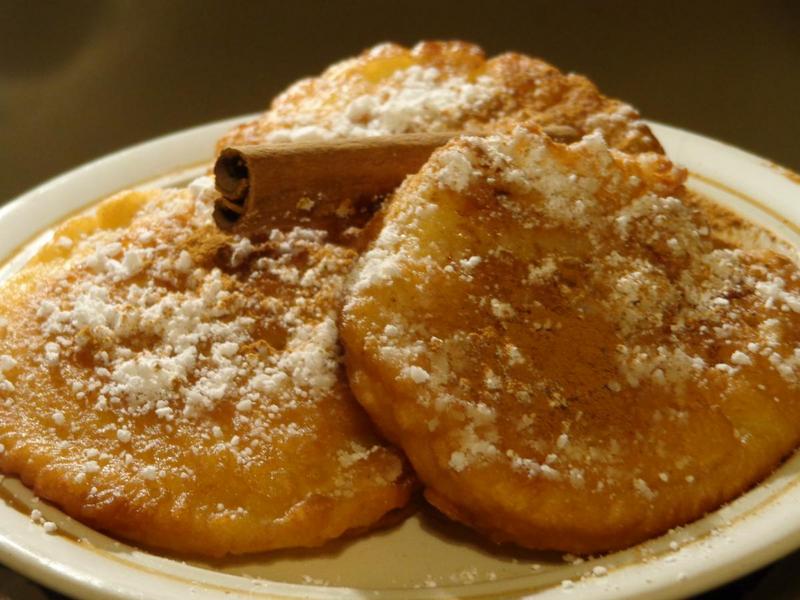 Any area of Greece developed its own recipe, based both on the special characteristic of the area (island, mountainous area, urban centres), the available raw materials, but in relation to the rules and religious culture. For example, in Euboea their Christmas dish is called "Babes". It is boiled intestines stuffed with liver, spleen and spices. The colour of the spleen was symbolic, so if it was clean, it was a good omen, and if it was yellow and engraved, it was an ominous sign. In Epirus (Zagorochoria) they made the "Spargana" (pancakes), which symbolized the infancy of Christ in the Manger. The Dodecanese boast the "giaprakia", stuffed cabbage leaves rice and minced meat. The wrapping of cabbage around the minced meat symbolized Christ's swaddling clothes.
Any area of Greece developed its own recipe, based both on the special characteristic of the area (island, mountainous area, urban centres), the available raw materials, but in relation to the rules and religious culture. For example, in Euboea their Christmas dish is called "Babes". It is boiled intestines stuffed with liver, spleen and spices. The colour of the spleen was symbolic, so if it was clean, it was a good omen, and if it was yellow and engraved, it was an ominous sign. In Epirus (Zagorochoria) they made the "Spargana" (pancakes), which symbolized the infancy of Christ in the Manger. The Dodecanese boast the "giaprakia", stuffed cabbage leaves rice and minced meat. The wrapping of cabbage around the minced meat symbolized Christ's swaddling clothes. 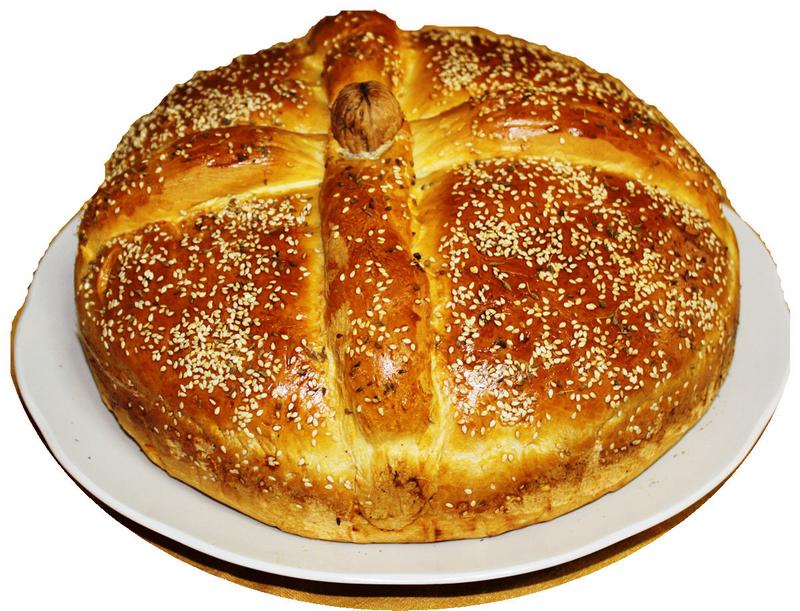 In Thrace there were nine different foods which were served on the table, uncooked and suitable for fasting. The symbolism here relates to the wish of abundance of food all year round. Moreover, a typical Christmas Greek custom in all regions is the Christmas cake which is adorned with separate ornaments that symbolize the divine power. The Christopsomo, a bread with a cross decoration is rolled on the table on Christmas Day. It is always made with the finest materials (fine wheat flour, nuts, sesame, spices). If it lands on the reverse side, the year will go bad and if it falls on its good side it will go well.
In Thrace there were nine different foods which were served on the table, uncooked and suitable for fasting. The symbolism here relates to the wish of abundance of food all year round. Moreover, a typical Christmas Greek custom in all regions is the Christmas cake which is adorned with separate ornaments that symbolize the divine power. The Christopsomo, a bread with a cross decoration is rolled on the table on Christmas Day. It is always made with the finest materials (fine wheat flour, nuts, sesame, spices). If it lands on the reverse side, the year will go bad and if it falls on its good side it will go well.
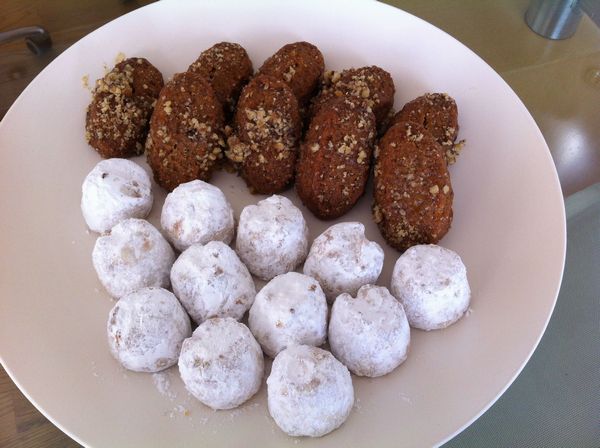 Desserts are not missing from the Greek Christmas table. The most common dessert is pancakes with honey and wine, where honey symbolized the abundance of goods for the rest of the year and wine symbolized the "growth and spreading" of the family like the vine". Finally, fruits such as pomegranates and apples were always on the table, so that the family has the "ruby" colour of health. Other sweets are the "kourampiedes" (cookies with sugar icing), "diples" (with honey), "melomakarona" (with honey and walnuts), "tiganopsoma" (with local cheese), "xerotigana" and spoon sweets (fruit such as sour cherry, grape, cherry, bitter orange, and bergamot, cooked with sugar).
Desserts are not missing from the Greek Christmas table. The most common dessert is pancakes with honey and wine, where honey symbolized the abundance of goods for the rest of the year and wine symbolized the "growth and spreading" of the family like the vine". Finally, fruits such as pomegranates and apples were always on the table, so that the family has the "ruby" colour of health. Other sweets are the "kourampiedes" (cookies with sugar icing), "diples" (with honey), "melomakarona" (with honey and walnuts), "tiganopsoma" (with local cheese), "xerotigana" and spoon sweets (fruit such as sour cherry, grape, cherry, bitter orange, and bergamot, cooked with sugar).
 The cake prepared with the coming of the New Year, the New Year's cake, contains a "gold coin", which according to tradition, brings good luck throughout the new year to the one who finds it. At Epiphany the Baptism of Christ is celebrated and the waters are sanctified by throwing the cross in the water. Many dive into the water in order to "catch" the cross, which is thought to bring not only luck, but also protection against evil and suffering.
The cake prepared with the coming of the New Year, the New Year's cake, contains a "gold coin", which according to tradition, brings good luck throughout the new year to the one who finds it. At Epiphany the Baptism of Christ is celebrated and the waters are sanctified by throwing the cross in the water. Many dive into the water in order to "catch" the cross, which is thought to bring not only luck, but also protection against evil and suffering.
Nowadays, houses are decorated during Christmas and New Year’s with various colourful and festive decorations, and the Christmas tree dominates the scene, although this custom came to Greece from the northern countries. Greeks traditionally decorated their houses with a Christmas boat that shows the importance of the sea in their lives.
Greece was mainly an agricultural country and the activities associated with agriculture are evident in Greek religious customs. The lit fireplace during wintertime, linked to expectations for the crop, is a basic reference point.
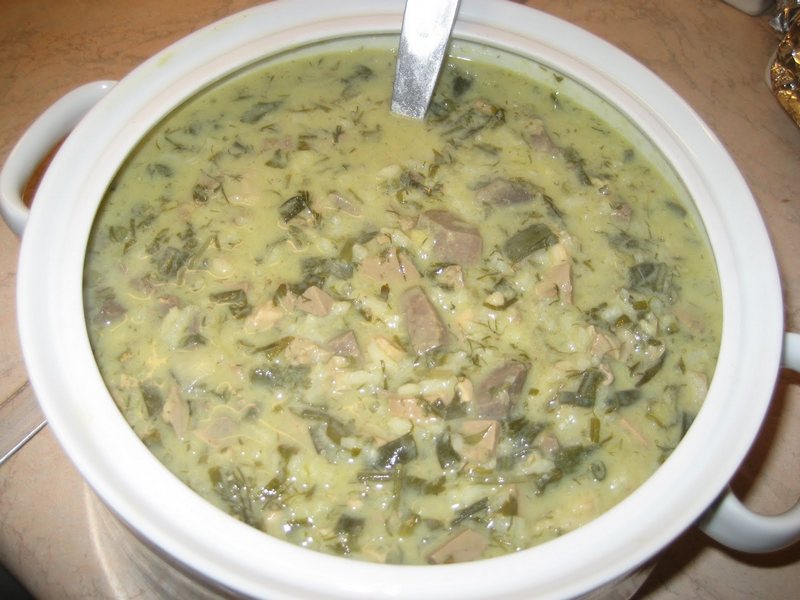 In any area of Greece, Easter has a traditional character and a distinctive feel. It has its own values, personal stamp, and type rooted in centuries-old traditions. The folk customs during the modern celebration of Easter in Greece, include dinner with "mageiritsa" (soup of animal offal and vegetables) as the main dish, which is eaten in the evening of the Resurrection after the Resurrection Liturgy in the church, the cracking of red eggs (eggs painted red symbolizing the blood of Christ), the "kiss of love" at the time of the Resurrection and the roasting of the lamb on Easter Sunday. Sweets-cookies with specific spices and aromas are also made as well as "tsourekia" (a type of sweet bread flavoured with mastic and machlepi).
In any area of Greece, Easter has a traditional character and a distinctive feel. It has its own values, personal stamp, and type rooted in centuries-old traditions. The folk customs during the modern celebration of Easter in Greece, include dinner with "mageiritsa" (soup of animal offal and vegetables) as the main dish, which is eaten in the evening of the Resurrection after the Resurrection Liturgy in the church, the cracking of red eggs (eggs painted red symbolizing the blood of Christ), the "kiss of love" at the time of the Resurrection and the roasting of the lamb on Easter Sunday. Sweets-cookies with specific spices and aromas are also made as well as "tsourekia" (a type of sweet bread flavoured with mastic and machlepi).
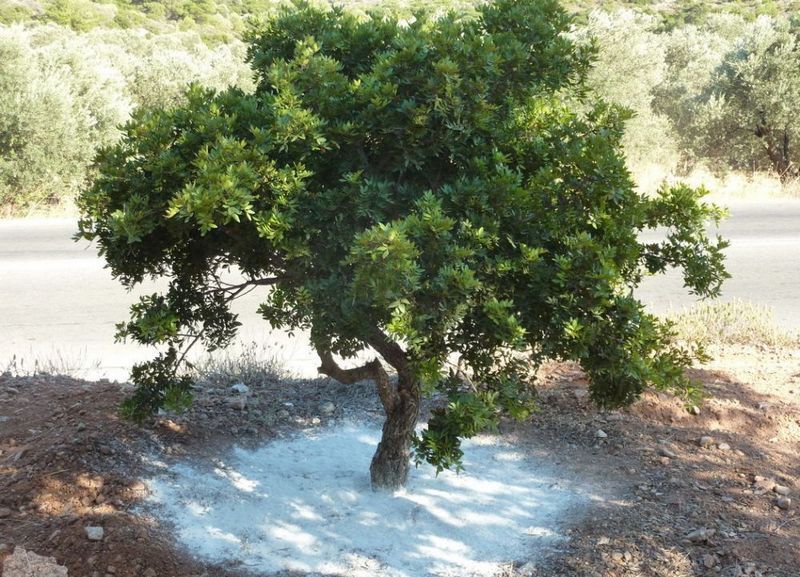 Mastic is an aromatic natural resin that comes from the mastic tree which grows only in Chios (island of the Eastern Aegean). Since antiquity mastic has had many uses: it gave aroma to foods and cakes, it was used for manufacturing furniture and musical instruments, medicine and pharmaceutical manufacturing.
Mastic is an aromatic natural resin that comes from the mastic tree which grows only in Chios (island of the Eastern Aegean). Since antiquity mastic has had many uses: it gave aroma to foods and cakes, it was used for manufacturing furniture and musical instruments, medicine and pharmaceutical manufacturing.

